Nowhere to hide: Stepping into the spotlight with brand transparency
| July 29, 2020

Yesterday’s Sherlock Holmes, Columbos or Nancy Drews are today’s average person with internet access.
Instead of digging for clues out in the field and using years of intuition to reach conclusions, the answers are delivered immediately and clearly right to our screens.
Many brands have taken a hit due to this ever-present concept, falling victim to uncoverings of information they thought wouldn’t be found.
If they had understood this one, simple thing, they would’ve been fine: brand transparency.
Even though transparency is the answer, many brands don’t yet have the right formula to reach that answer.
What is brand transparency?
Brand transparency is how a brand shows itself to be genuine and open, especially regarding public interactions. It is one of the most powerful ways to gain the trust and loyalty of a target market. Brand transparency mostly refers to a brand’s active attempts at honesty.
Keep in mind that brand transparency isn’t always the opposite of brand dishonesty. It’s much more complex than that.
Here are some ways to be transparent:
- Communicate with customers
- Be available
- Be honest
- Don’t hide from mistakes
- Avoid half-truths and sneaky practices
As you can see, the factors that make up a transparent brand are pretty wide-ranging. They involve creating clarity concerning certain values and ideals. They also include pulling back the curtain on products and services, when possible.
There are a lot of things you can be transparent about, as well:
- Pricing
- Products/materials/ingredients
- Past mistakes
- Values/ideals
Brand transparency will mean different things to different brands, but the main principles should remain consistent – be open and available to target audiences.
In this article, I’ll shape your approach to transparency with proven strategies designed to go above and beyond. Let’s get started.
Why transparency is needed, especially today
Let me start off by saying this: In today’s climate, all brands are transparent, whether they want to be or not.
However, some brands are still trying to hide or cover things up, while others are working towards showing themselves even more.
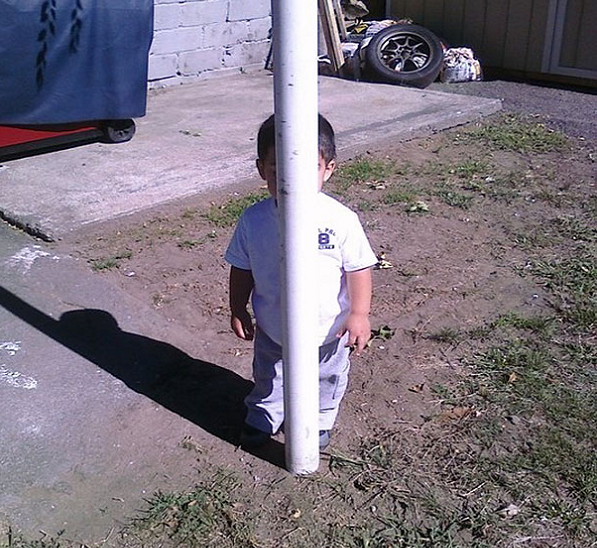 So when I use ‘transparency’ throughout this article, it means an attempt to be honest or genuine.
So when I use ‘transparency’ throughout this article, it means an attempt to be honest or genuine.
You’re probably wondering if the only reason to be honest is because it’s too hard to cover negative press up these days. The answer is no, being an honest brand is:
1. The smart and right thing to do anyway
2. Pretty much forced with the amount of information available in modern times
3. An expectation of your target market, and this expectation seems to grow stronger each year
It starts to become clear, as you examine the current landscape for major brands, that it’s necessary to be open and forthright. Here’s an example to demonstrate further.
An example case for transparency
Imagine there are three major fast food brands serving the global market in the 1980s.
Things are going well for them all, until the 90s, where customer trends change. In the 90s, customers began to want detailed information about the nutrition data for their fast food.
Two of the three brands capitulate, deciding that it was a good idea to give the customers what they wanted. As a result, customers began to choose these two brands and stopped buying from the third brand.
Nothing had changed, yet the third brand somehow looked bad, simply for not recognizing the importance of transparency.
Now, this isn’t to say that if your competition does something, you must follow suit. However, when it comes to sincerity, you do have to keep up with (and hopefully surpass) the competition.
Learn more in our comprehensive branding guide.
Before we go over the benefits (and there are plenty), let’s look at the negative effects of dishonesty (there are plenty more).
Failing to be transparent – the resulting consequences
“Take the long way. Do the hard work, consistently and with generosity and transparency. And then you won’t waste time doing it over.” – Seth Godin
Just as there is a problem with lying, there is similarly a problem with being too tight-lipped. You don’t have to be dishonest to be perceived as perceptive. All it takes, in fact, is to not be open enough with audiences.
With that in mind, here are some potential negative effects you can’t ignore:
Loss of control
Being truthful and putting our values and experiences out there for all to see allows us to control and dictate the narrative. Not doing so often results in a loss of control.
 When we don’t present ourselves with sincerity and reveal important information, chances are customers will seek alternative sources for it. This could be concerning our products, services or even some event.
When we don’t present ourselves with sincerity and reveal important information, chances are customers will seek alternative sources for it. This could be concerning our products, services or even some event.
Opening up gives us a chance to set the record straight or give helpful facts and details. Failing to do so leads customers to speculate or find potentially faulty information.
Ultimately, it doesn’t matter what the real facts are if our customers never get to hear them.
Loss of customers
As i pointed out in the fast food example above, a lack of openness typically leads to a lack of customers.
It stands to reason that, if a majority of direct competitors are open and honest, your target market will expect the same. If they don’t receive it, they’ll leave.
This can be the result of many different factors, but the common denominator is a lack of clarity. If the competition is available on social media, you should be too. If they respond to negative questions or comments, you do the same. The customers will notice.
The last thing you want is for a valued customer to feel shut out. Keep this in mind as you learn more about the important strategies to stay open and honest at all times.
Getting exposed is worse than self-uncovering
If it’s not obvious to everyone by now, it is pretty easy to find just about anything with a computer and internet connection.
When you take into consideration the massive mounds of data compiled and stored, and how quickly it can be searched through, the average person might as well be considered a supersleuth.
Attempting to hide details from the public, in today’s landscape, is almost comical.
 Whatever it is you’re uncertain about uncovering, chances are it will happen anyway and with potential consequences.
Whatever it is you’re uncertain about uncovering, chances are it will happen anyway and with potential consequences.
As long as you stick to ideals and values, the results will be acceptable. Even if some customers don’t agree, others will. Might as well be open to avoid alienating the customers who would have stuck around regardless.
It’s tough to examine the negatives, but it’s a necessary evil, especially when it comes to this topic. Luckily, you’re now armed with the knowledge of pitfalls to avoid. Even better, we’re going to jump into the benefits.
Brand transparency benefits
Fortunately, the rewards of honesty and authenticity are well worth the efforts you’ll put into creating them. Here are some that cannot be ignored.
Increased customer loyalty
Approximately 65% of customers will stay loyal to a brand they believe to be genuine. This is a staggering number, especially considering there will be other reasons customers will stick with you, making the percentage much higher.
Add this to the fact that 75% of these same customers will spend more money for products and services from a transparent brand, and the benefits become undeniable.
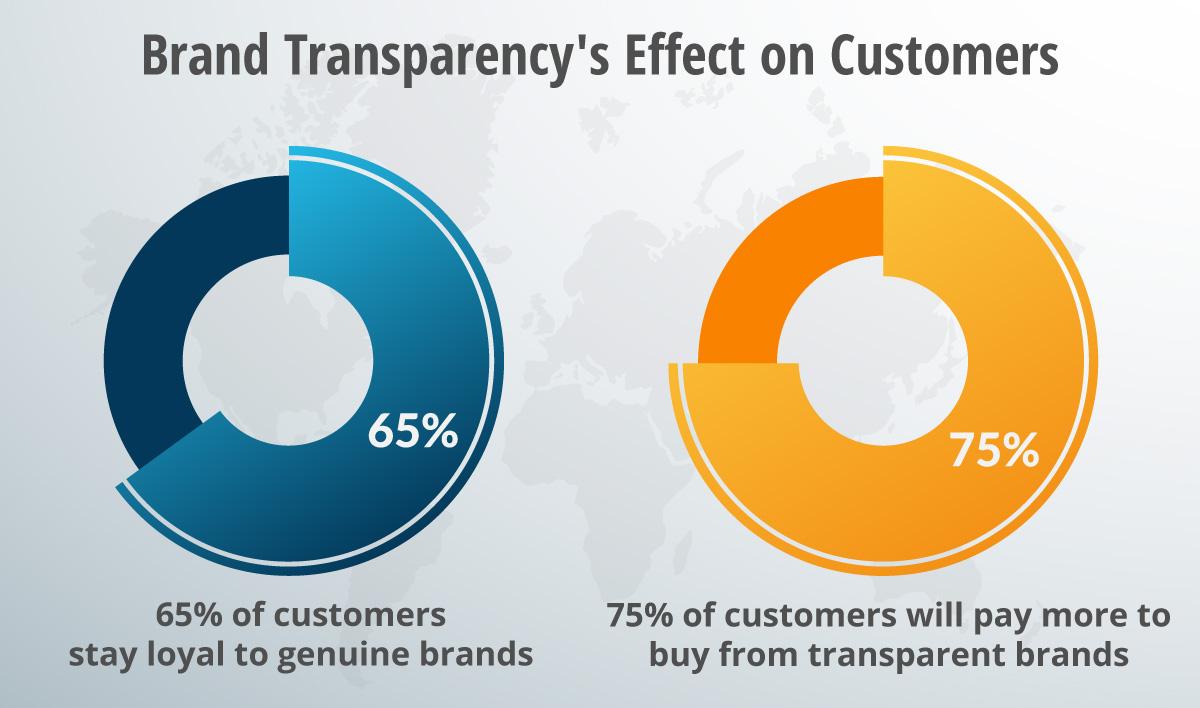 Customer loyalty is something brands strive to obtain, so by the same token, their efforts should include a sound strategy to build and maintain honesty and authenticity.
Customer loyalty is something brands strive to obtain, so by the same token, their efforts should include a sound strategy to build and maintain honesty and authenticity.
When customers feel they dealt with a sincere, authentic brand, they want to experience that again. Each new experience with the honest brand strengthens the bond, building customer loyalty.
Internal inspiration and energization
Committing to bettering your truthfulness has deeper implications than making your customers happy.
A sincere brand is something that creates enthusiastic employees as well. Also consider how hiring processes are positively affected. It stands to reason that your honesty will draw in superior candidates, giving you the pick of the litter.
This is the kind of inspiration that boosts creativity and positivity among internals, which in turn spreads to potential customers.
Builds brand advocacy
A brand advocate has exponential value, especially in today’s well-connected world of digital options. On top of this, an advocate champions your causes for free, and their opinion is well-respected because of it.
It doesn’t take long to notice the difference strong advocacy makes. It’s estimated that 40% of purchases are inspired by some type of recommendation.
Authenticity ignites customers to become advocates, sending sparks of sales, increased revenues and the chance to lure more customers.
Lastly, advocates ensure that your honesty spreads through word-of-mouth, basically acting as an advertisement for your authenticity.
The benefits of keeping things open and honest are immense, so you’ll want to do everything possible to earn them. Without a clear strategy, chances are there will be many errors along the way.
Fortunately, I’ve come up with dynamic methods you’ll be able to immediately add to your repertoire.
A system of strategies to help you succeed
We can’t escape from the fundamentals, and I certainly won’t steer clear of them here. However, it’s clear that, especially in today’s competitive landscape, our branding strategies need a mixture of basic, creative and contrarian aspects in order to allow us to stand out among the competition.
That’s what I’m going to provide here, the unorthodox strategies needed to get a leg up on other brands, and possibly get you thinking differently about transparency.
Do not pretend, even slightly, that you are perfect
“Perfection does not exist — you can always do better and you can always grow.” – Les Brown
Your brand isn’t perfect. The good thing is, no brand is. Even better is the fact that everyone already knows this. There are a lot of negative aspects that come with attempting to be perfect or feigning perfection.
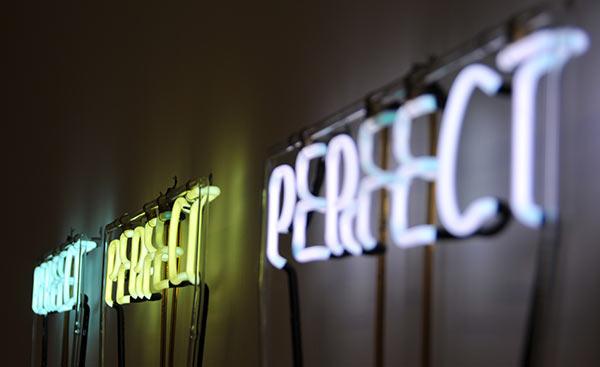 We’re going to avoid these negatives by doing something a lot of brands fail to even consider most of the time: letting down our guard.
We’re going to avoid these negatives by doing something a lot of brands fail to even consider most of the time: letting down our guard.
Revealing vulnerabilities to our target audience is an offbeat way to handle branding throughout all different types of problems, conversations and tasks.
Embracing your flaws opens up lines of communication with customers, helping them let their guard down with us in return. There’s a certain humanity behind the idea of imperfections.
Not only that, but it also creates more future possibilities to connect with target markets, since they’ll naturally be more trustworthy.
Remember that I’m not suggesting you spend hours each day confessing about each error made or degrading your brand. However, you absolutely should take a few jabs at yourself every once in a while.
Brand persona – striking the right behavioral balance
In the movie ‘2001: A Space Odyssey’, the notorious robot ‘HAL’ becomes the antagonist of the film when it’s determined it has bad intentions.
One key moment of the film comes when the pilots of the spaceship where HAL is a passenger realize they shouldn’t trust the machine. They speak somewhere that HAL cannot hear them, only to be found out through lip-reading.
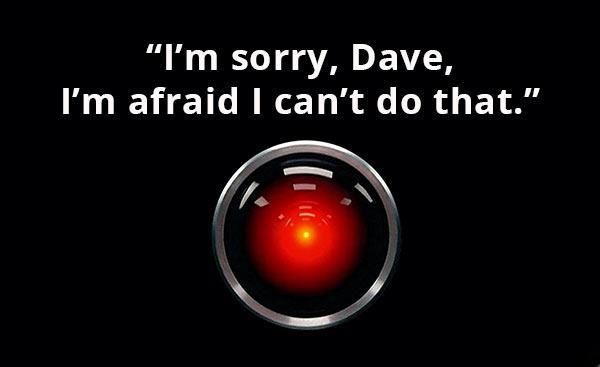 As demonstrated by the ‘2001’ pilots, (and most likely, almost everyone who ever watched the film) there’s just something about nonhumans that is impossible for us to trust. That’s not to say we always trust other human beings, but certainly we try to, and specific characteristics bolster that trust.
As demonstrated by the ‘2001’ pilots, (and most likely, almost everyone who ever watched the film) there’s just something about nonhumans that is impossible for us to trust. That’s not to say we always trust other human beings, but certainly we try to, and specific characteristics bolster that trust.
A brand is not a human. However, the right brand persona can build trust with a target market. There’s technically no wrong way to build a persona, though it should relate to your audience as best as possible.
Imagine, for a moment, that your customers were asked some questions about your brand. If they were asked about your sense of humor, what would their answer be? How serious are you? Laid back? Friendly? Believe it or not, you’d likely get some pretty detailed answers.
Consider what types of answers your brand would get, then build a persona the way you would want the customers to answer.
In order to win their trust, you have to be much more than a robot on a spaceship.
Enhance your feedback
First and most importantly, it’s impossible to accept any suggestions or make new changes without a legitimate structure for receiving extensive feedback to begin with.
This has to be our starting point in order to tackle feedback. There should be numerous opportunities for our target audience to deliver their feedback to us. This will vary for different brands, so think of the most convenient methods you can offer personally.
 Next, show that you’re open to getting feedback. Customers will be reluctant to share negative thoughts, stories or experiences about your brand if they see a public denouncement of feedback, no matter how justified you felt it was.
Next, show that you’re open to getting feedback. Customers will be reluctant to share negative thoughts, stories or experiences about your brand if they see a public denouncement of feedback, no matter how justified you felt it was.
That’s not to say you can’t respond to negative feedback, but do so in a way that is professional and shows you’ve acknowledged all of the problems the customer had.
Finally, the only way a feedback system will show your brand to be transparent is if it’s clear you absorb the suggestions when receiving them. It’s pretty obvious to a reviewer when their feedback was truly valued and absorbed or not.
Even if they’re certain nothing will change as a result, they want to know there was thoughtful consideration on the other end. An automated cookie-cutter response will not accomplish this. Go above and beyond what other brands will do to show you value feedback, and audiences will respond favorably.
Increase your overall communication
We hear all the time about how people say they want transparent, genuine brands, but what does that mean? Are they referring to honesty? Clarity of products and services?
All too often, what gets lost in this vague phrasing is the extensive communication required to be an authentic, sincere brand.
Though it is expected of brands to communicate with customers, this is also a vague expectation. In order to truly be genuine in your correspondence, consider the following principles: where at, how often and how well.
Where at?
First, let’s explore the ‘where at’ part of the communication equation. Do customers feel they’re able to reach your brand in different locations and on different mediums? If they compared you to competitors, would you be more accessible?
Re-evaluate the accessibility and connectedness of your brand and try to structure it in a way that widens communication.
How often?
Next, the ‘how often’ aspect is concerned with the volume, both the in-conversation volume and the amount of conversations. This doesn’t have to be a direct one-on-one chat, either. There are many different ways to increase this volume.
Consider the reactions users had to transparency on social media (chart courtesy sproutsocial):
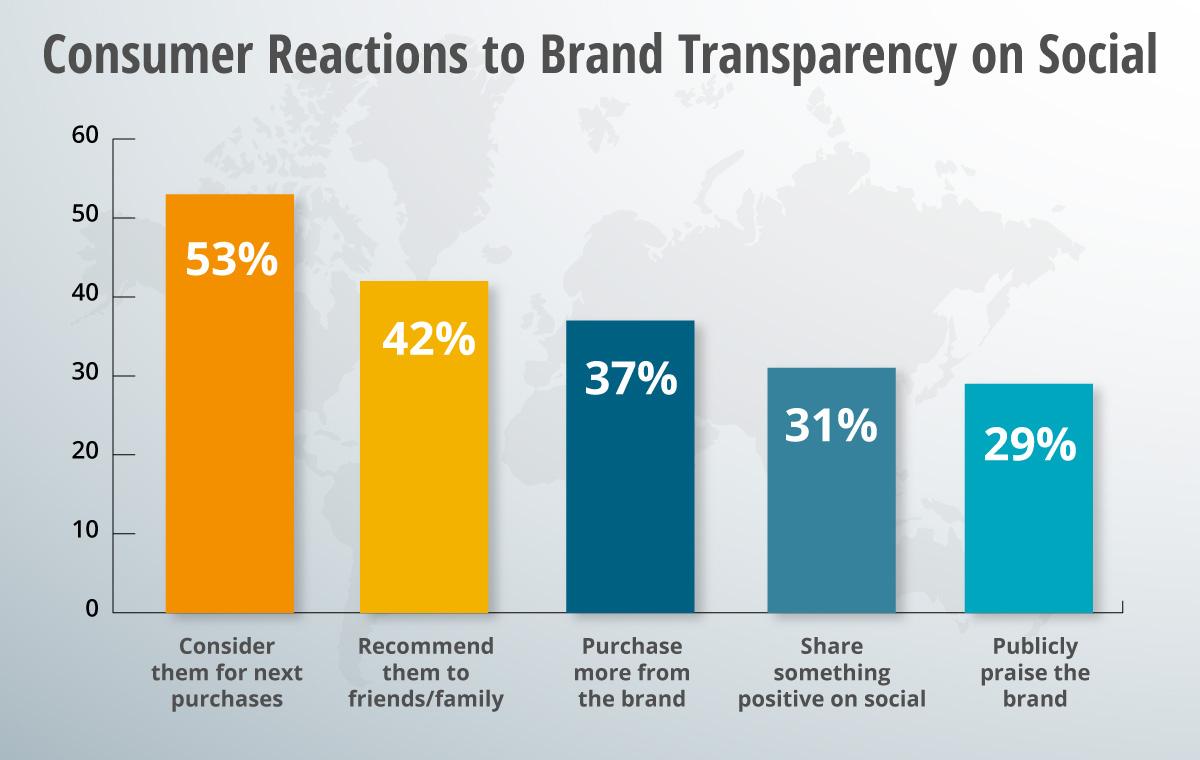 Emails, newsletters and random updates on social media count towards this volume, too. Don’t overdo it, but make sure you’re giving audiences enough of what they want when it comes to communication.
Emails, newsletters and random updates on social media count towards this volume, too. Don’t overdo it, but make sure you’re giving audiences enough of what they want when it comes to communication.
How well?
Last but not least, the ‘how well’ portion is a measurement of the quality of communication your brand has with customers.
Similar to the above, this also doesn’t need to be a one-on-one conversation in order to count. It suggests that there are a multitude of ways a brand can have thoughtful communication with customers that extends further than basic greetings and pre-determined messages.
When done correctly, even non-human contact can be satisfying to customers.
Final point to consider: Communicating well involves understanding of the dynamics involved from medium to medium. A conversation between brand and customer on a company website will almost certainly require a different tone than a conversation on social media.
These strategies will provide you more than enough resources to get started. Now that you have them, seeing some examples of other companies who got transparency right is key.
Examples of brands who do it right
The following brands understand exactly what’s needed to propel their authenticity and honesty. Use them as a way to carve your own path.
Buffer
Buffer is first up on the list as their brand has been making waves in a lot of different circles as going above and beyond the typical requirements for transparency.
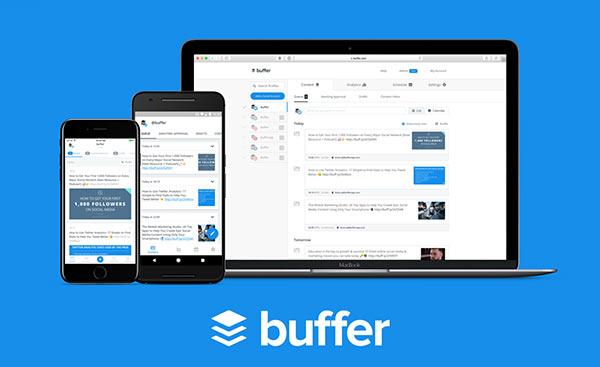 A simple visit to their website will confirm this fact, as the ‘About’ section lists transparency first under their values.
A simple visit to their website will confirm this fact, as the ‘About’ section lists transparency first under their values.
Where they really shine, however, is their business model of keeping everything open source and all their projects available for everyone to see. Most notably, especially to the general public, is that all salaries are publicly available. They’ve taken transparency to another level.
McDonald’s
McDonald’s gets brought up a lot when speaking about transparency. With their immense success came scrutinization that often went unchecked.
 To improve upon this and show themselves as an honest brand, McDonald’s has launched many different initiatives to put everything out in the open.
To improve upon this and show themselves as an honest brand, McDonald’s has launched many different initiatives to put everything out in the open.
The most notable campaign offered a chance for people to ask any questions they had about the product the restaurant was selling. Many flocked to the website to give it a shot, receiving all sorts of legitimate answers to unique questions.
Many feel this campaign was a gold standard for building transparency, at least in the fast food industry.
PayPal
PayPal’s overwhelming popularity has made them a target for all types of scamming attempts. Fortunately, PayPal used their different communicative avenues to let audiences know what they would do to combat this and exactly the effect it would have.
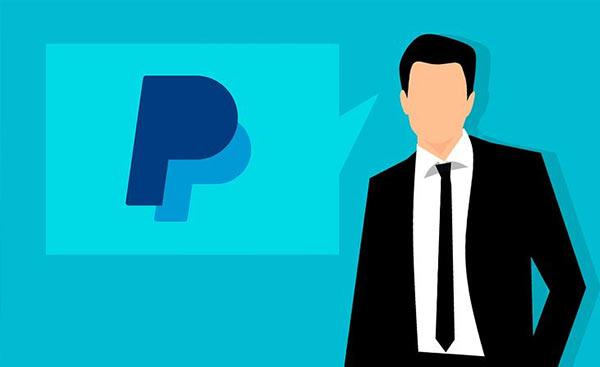 On top of this, the online payments company offers support and wide-reaching communication beyond their website. They have active social media accounts that serve as another form of help and security for customers.
On top of this, the online payments company offers support and wide-reaching communication beyond their website. They have active social media accounts that serve as another form of help and security for customers.
Ultimately, PayPal is aware that when so many transactions are completed between different parties, the potential for fraud, scams and disagreements increases. However, due to their willingness to be open and honest, they’ve been able to keep this under control and give customers the service they need to be satisfied.
Your trek to truth
You won’t get far without complex, unique strategies and structured implementation of brand transparency. However, the challenge doesn’t end there. This process should become a lifestyle of your brand.
Finally, remember that this is not always going to be easy. Commit to the uncomfortable – it could make all the difference.

